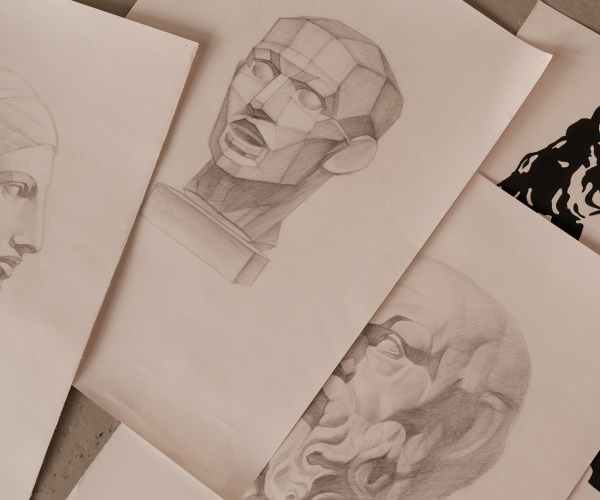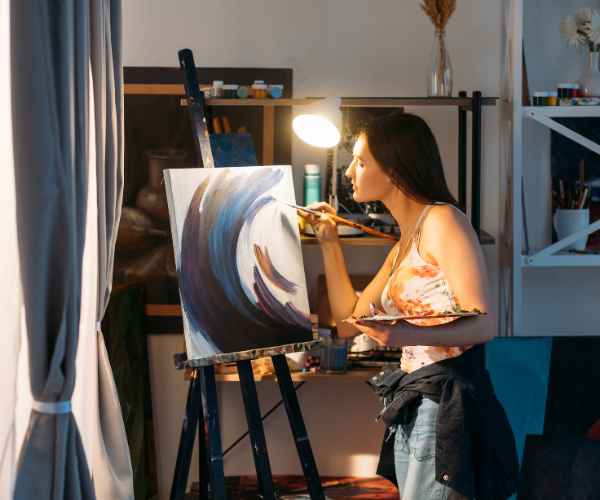The influence of music on the creative process is a broad topic. Let’s take a closer look at it.
The impact that music has on me is truly special, and if art can be defined as a function that is executed within the brain, it is music that allows me to overturn the boundaries that are imposed onto creativity.
It makes me wonder—doesn’t it feel surreal when you play your favorite music, and it almost seems like the world is yours to seize? It is like the power of the sound and the melody accompanies a more profound instinct in us that demands to be liberated.
Many of the professionals define music as a Muse and a source of great innovative ideas, and thus serves to them.
For instance, I recall a previous encounter when I had to paint a specific concept. I had all the required tools, including the brush, but as it would seem, luck was not on my side. I put some jazz music on, and that was really the beginning. Everything around me, everything around: the music, the tips of the brush… such synergy was impossible to miss. It seemed I was composing, and I absolutely forget what I had been doing, then what seems liked 10 minutes turned out to be an hour and I enjoyed it later what I helped create.
Indeed, in order to better understand all those relationships regarding different kinds of genres within music and artistic expression and its influence while creating the zenith works of art, this article will try to discuss all those issues.
Wether you paint, write or are any kind of artist, there’s a form of music that can relate to each one of us, so let’s get right into it and explore how powerful music can boost our creativity.
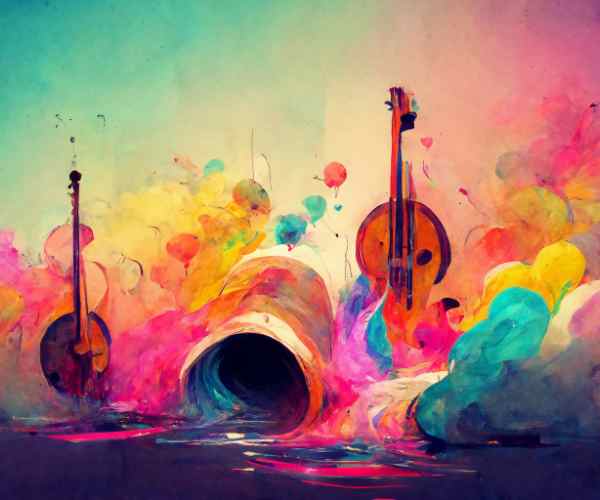
The Role of Music in Creative Processes
Music has made its way to being one of the most effective concentration tools overtime for me.
The very first thing I do when I need to focus is play a lo-fi that has no vocals, umm, to be more accurate, any instrumental stays off my head mainly due to the tranquil environment it creates for me. I am able to think more clearly now without anything disrupting me.
Research has shown time and time again that listening to music especially during moments of intense focus motivates people. It’s like carving out a space where one can work unburdened from the surrounding noise.
I remember an illustrator claiming she was able to locate her working rhythm through classical music when she was doing her projects. She said it was like the music provided a sense of “breath” that was in sync with her creative energy.
What’s even more intriguing is how these instruments when streamed in a particular way encourages you to be creative on your own.
For example, I am supposed to give a lecture and talk about why Lara Jean from ‘To all the boys I’ve Loved before’ is awful. If I were to listen to an incredible soundtrack before speaking, chances are I would associate it with the emotions the music is evoking, And I would like ideas would flow freely from within me.
There are numerous examples of prominent musicians and artists that have stated their music has inspired them to produce great artworks.
Consider the case of Pablo Picasso as an illustration. He engaged himself in the company of musicians, with the effective concept of being inspired by their forms of art. The cadence of an energetic flamenco dancer would invite him to apply stronger and wider strokes on his wet surface as though he was painting warbling music.
In the same way, quite a few authors compile playlists comprising songs related to the subject of their writing. Haruki Murakami on the other hand is considered a popular writer who also makes lists of songs that accompany his books because he has an inclination that with the tune right everything about the story will be set.
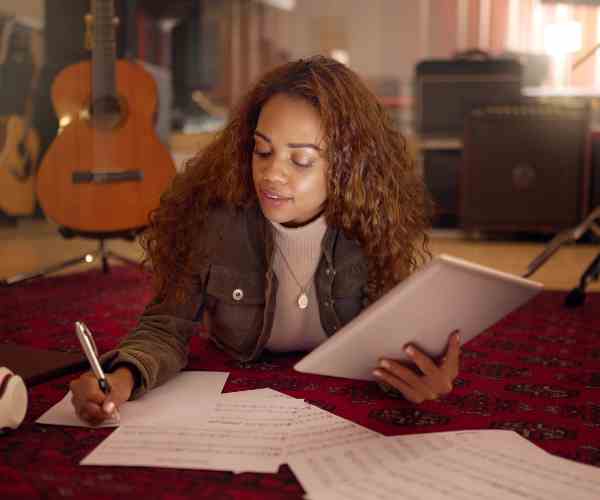
How Music Influences Mood and Creativity
Today, we will discuss the neuroscience of music and its relation to emotions, which is very fascinating.
Think of that one song that immediately puts you in a particular moment; is it a disastrous breakup song or a fun road trip song? It is easy to see how music can make us feel so deeply.
The concept of how different genres of music generate different emotions also makes sense and can be explained through our neuroscience.
Our brain regulates dopamine throughout the body, the better-known “feel good” hormone, when we hear music we deem enjoyable. Consequently, this leads to an increase in our happiness levels, and enhances our motivation and creativity.
A powerful piece could lift my spirits while a sorrowful ballad could lead me into deep thoughts and contemplation; isn’t it interesting how music can stimulate an artist’s brush, pen or even a camera’s shutter? For me personally, music’s emotional power is far more important than words.
Even artists have shared stories on how specific genres or tracks influenced their imagination and work.
As an example, there was a local musician who wrote a compelling song whose lyrics were somewhat aided by a Fleetwood Mac song. The song’s emotional core made him remember things that he has never remembered before, hence, changing how he approached writing songs.
Another instance was with a painter who claimed to get inspiration while listening to pop songs in a fast tempo. According to her, the fast beat motivates her to play around with color and shape resulting in exciting and colorful artwork.
Music does help us understand ourselves in terms of emotions and our environment, and very often this understanding is the basis of our creativity.
Music’s Various Types and How Each of Them Affects Creativity Differently
Focus is easily achievable with classical music just as creativity is possible; it is like walking into a quiet garden where thoughts are free to flourish without interruption.
There was a day that comes to mind when I was working on an article that turned out to be a mad one. I was busy with a terrible amount of mental baggage that comprised of names, tasks, random thoughts. Sorely irritated, I turned on some classical music, or rather, some Bach.
As the melodic sounds began echoing throughout the atmosphere, I could feel the tension in my body easing. It felt as though the music was rearranging the chaotic mess in my mind and allowing me to give proper attention to my writing.
Most classical artists recommend that you listen to classical pieces while working as they believe it helps comprehensively enhance your focus. This assertion is further corroborated by numerous studies, which suggest that encompassing usage of classical pieces aids in improving concentration and enhancing brain functionality once again. It sets the perfect mood for getting work done, which is especially advantageous for all forms of artistic work.
Now let’s delve into the intricacies of jazz art and how it nurtures the feeling of spontaneity and improvisation for an artist.
Everything about jazz genre is about breaking free and creative expression. I once visited a small club where a band was performing live jazz music. All of them were completely free from shackles yet fully in harmony, switching out who was solo and adding to what was being played, resulting in every single note being utterly original and distinct from the rest.
That feeling of improvisation would find strong resonance with creative people and help them eliminate the fear of going beyond established constraints. For example, a jazz musician plays a solo and the painter notices its chaotic and random strokes on the canvas moving and expressing the music.
Jazz seems to spark a feeling of freedom in many within the music realm allowing creativity to soar without any limitations. It indeed is a genre that is free flowing and encourages one to be playful with their art.
Shifting to pop and electronic, these two genres are closely associated with both modern art and design.
If you observe pop art, you will see a lot of energetic designs accompanied with a mix of vibrant colors. All these elements reflect the feel of a pop song.
For instance there was an art exhibit i attended, the entire place had electronic music playing with neon colored artifacts scattered all around. The artists of these pieces had these created while listening to electronic music which gave them the power to make creative choices.
With all of this being said one of the best parts about pop music is how uplifting it can be. Many often start with catchy hooks or lyrics and transform that feel into a painting or a artpiece.
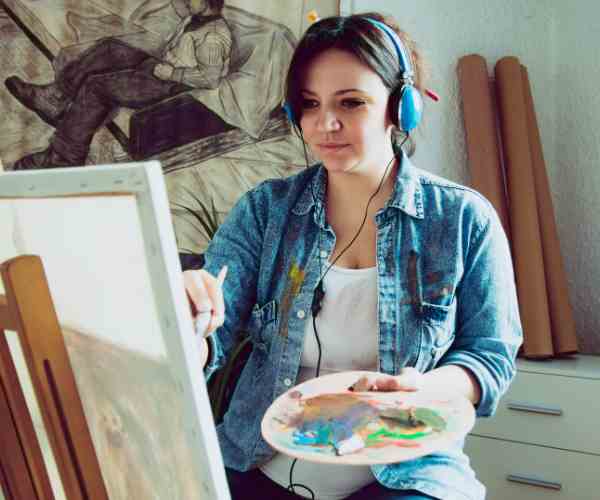
Collaborative Creativity: Music and Artistic Communities
Now, let’s explore the metalanguage of Stravinsky and Kant in the light of music collaboration.
Interdisciplinary approaches towards classical and contemporary converge at artistic events where sculptors exist as performers.
Oh! I witnessed a growing band sing while a medalist sculptor was simultaneously creating a masterpiece. The brush apparently appeared to be swayed with the rhythm whilst the song’s vocals changed the scene quite creatively. It was indeed captivating to see such an impactful correlation between the energy of the music and the motion created by it.
Wherever innovation occurs in the world of creativity, art and music amalgamation is profuse and omnipresent.
Gerald Scarfe worked closely alongside Pink Floyd with the songs and lyrics of the animated film, The Wall, allowing him the opportunity to build the words into the wall of music. Such union involved the fusion of sound with sight which is self-focused thus reaffirming their supremacy in such matters.
And lastly let’s not forget how art collectives around the world use music in their collaborations building communities.
In my hometown, there’s a group of artists who host these sessions that go by ‘art jams’ every end of the month, musicians and visual designers work alongside each other. As the music begins to play, the designers start painting, drawing, or sculpting to match the rhythm of the song. Everyone on board is a creative person, and it shows during the art jam, because the combination of music with each artist’s unique style is a breathtaking experience.
This artistic environment, however, leaves room for remarkable creativity to blossom, allowing each artist to explore and test their limits. That’s how you know art isn’t isolated: it’s always done with the help of others.
Now, let’s look into the neuroscience behind music accompanied by artistic elements.
There is a set of interesting connections between the listening of music and the workings of the creative brain.
For example, it has been demonstrated that when we listen to music we would like, some portions of the brain become “active,” which promotes higher order reasoning. Those sounds activate parts of the brain linked to emotions and memory, which can result in creative thinking.
It’s quite captivating to see the part dopamine plays in creativity when music is being played.
Dopamine seems to always be connected with a sense of pleasure. This is why when we tend to listen to music which we feel strongly towards dopamine release pleases us. So, there’s no surprise that dopamine release plays an important role in motivation and creativity.
I’ve personally witnessed this during creative sessions when listening to my favorite songs makes me feel great and bring ideas up. Like the feeling when a light switch is flipped – all of a sudden, the motivation to be creative is there, and inspiration distributes without any constraints.
This discovery can be used by the artists to improve their creations.
When fighting through artist’s block, for example, finding out what genre please them the most will definitely help them out, they can create a playlist that matches with what they working on. If they working on a bubbly pop or electronic music they can use that as a starting point for a more abstract modern piece, or if the inspiration is more classical they can use that instead.
FAQs
1. How does music specifically enhance artistic creativity?
Music does something insane, it grabs our emotions and makes us feel a certain type of way we didn’t know existed, and it manages to was unlike nothing ever.
I remember vividly the surreal sensation of the energy and the creation of the new world that Klaus Doldinger’s songs would give me. With every note that traversed the air, my worldview shifted.
Being enveloped in such essence, it feels like music can help maximize your creativity by stimulating emotional responses that can help spark innovative ideas.
2. What genres of music are best for boosting creativity?
Ah, the eternal argument on which music to play to induce a surge of innovative ideas.
In fact, it’s a proven fact that different genres have different effects on our creativity.
For instance, a study has shown that classical music has a calming effect on a majority of the population. The soft and delicate compositions tend to assist people to focus on a singular task, them being quite often scattered.
But on one hand, if you are in need of a creativity nudge, a little fast-paced pop or electronic music might help you out.
For instance, on one occasion while I was designing my studio a few days ago, I was preparing for an art exhibition I have planned.
I remember during that stage, listening to fast-paced pop songs and the catchy beats helped me feel productive.
If I had to describe the feeling after the connection between the brush and the music had been established, I would say it was not just a joy, but a valuable experience consisting of enjoyment and work alike.
3. Is creating art while listening to music considered a distraction?
It can be! This really varies from person to person.
Some artists find music helpful while working as it provides them with a focused environment by blocking out distractions.
However, this is not the case with all artists as some artists find music to be distracting.
I remember chatting with an artist who preferred to work while listening to no music.
She argued that when she listened to music her thoughts got jumbled and her concentration was broken whilst, in my case, I am often engrossed in my favorite songs.
Though it is a matter of personal preference rather one or the other.
Reaching the right equilibrium is important. If you’re experimenting, try starting with non-vocal songs or unfamiliar genres that don’t disturb your concentration and see what changes it facilitates in your ease and inventiveness.
4. Is there a specific song that is most liked by artists?
Certainly! There are lots of songs that prominent artists have more on their top gainable lists, which they feel more energetic in crafting their music.”
I have always been fascinated by music and its alluring nature has always had a great effect on me, here’s my take on the influential effect music has on one’s life.
It is quite obvious that music has dramatically assisted artistic evolution from the very beginning of time, its influence, when blended with the imagination, comes out to be quite astonishing. I have a couple of songs i always listen to in order to get my creative juices flowing, or whenever I feel like my spirit is low. For example if I am in desperate need of motivation I will listen to “Uplifted” by Wookie as it remains to be a very good source of inspiration. The melting voice of Fleetwood Mac can also do wonders for new Indie artists, and whether they like it or not, they can’t deny its magic. Additionally, a lot of artists do rely on emotions and memories embedded in songs, they use them as musical fuel, or artistic motivation if you will. I also remember how a certain artist talked about how once she is done creating the song, she adds a mirror and shows the reflection, in such a way, this space intersects with that space turning the room into a different place. Just as every movie has its own soundtrack, so does every artist, as i believe every piece of art is a direct reflection of the imagined movie. In simple words, all the emotional sounds serve for their motivation which always leads them to create an impressive piece of work. When it comes to summarizing, the best summary in this case may be the observation that music and creativity work together. As discussed in the essay, art has a deeper influence than simply stimulating creative thoughts, it also activates a person’s emotions in a way that verbal language cannot. For artistic creators, an awareness of the effect of music on feeling or perception is always beneficial. Keep in mind how during your artistic experience, music can become a companion that will assist you while creating. Therefore, whether it is classical or pop, music works in extreme conditions on the brain and the right song can trigger a creative breakthrough.



